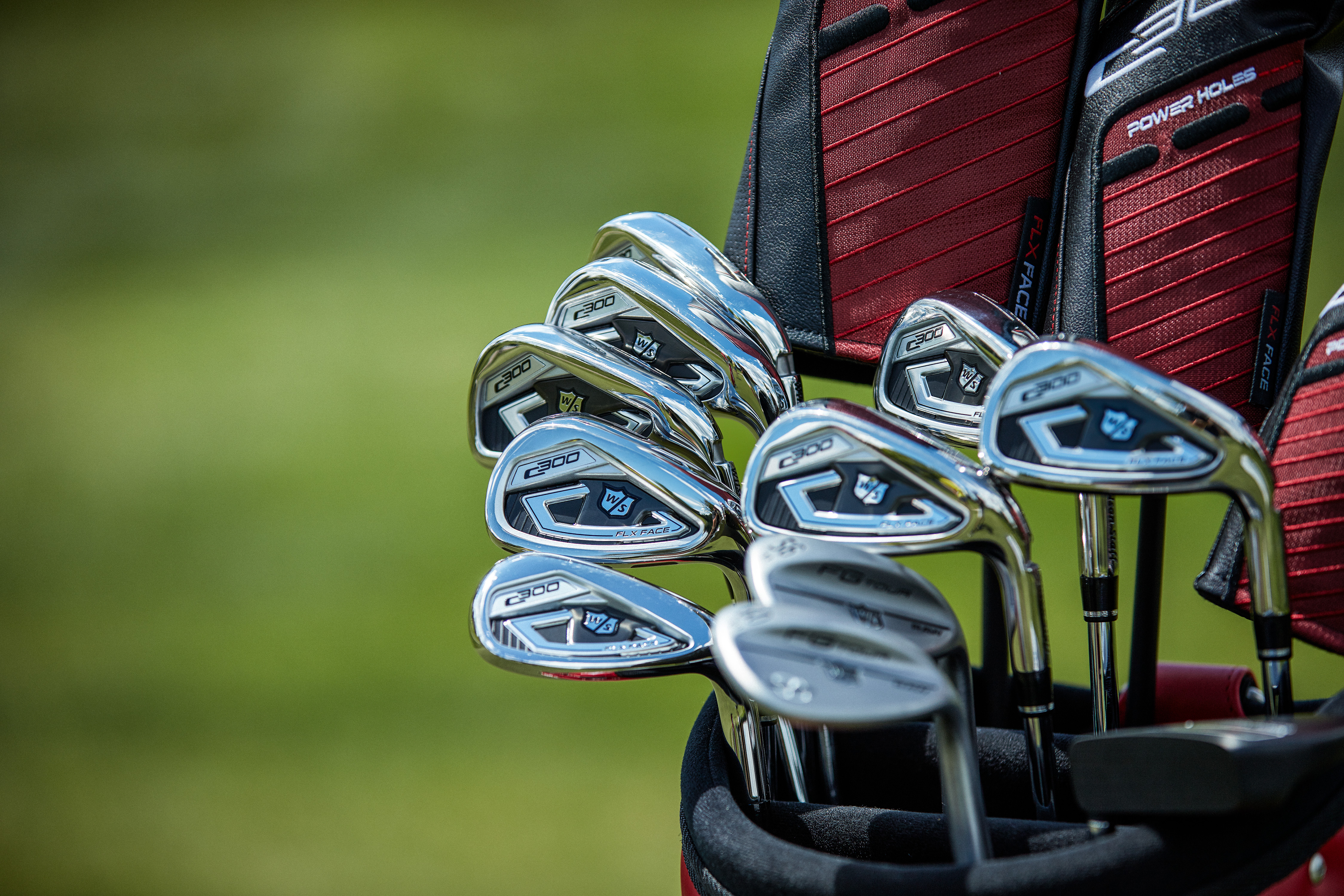When Wilson Golf came out with the C200 irons a couple of years ago, the reaction was mixed. Here was Wilson Golf, a classic brand in the game, creating game-improvement irons with holes around the perimeter of where the iron face meets the body.
The holes -- Power Holes -- were strategically placed and filled with a polymer all in the name of creating a more spring-like flexibility for the irons so that they could deliver maximum distance no matter where the ball was struck on the iron face. The idea had been used successfully in drivers, fairway woods and hybrids. They had made their way into irons. This was Wilson's take, and they were aggressive in the styling. Some thought the Power Holes were distracting, but for us, after a few swings, it was hard to even notice them. (After all, you don't see the iron head while you're swinging it, right?)
So, for the next iteration of the C line of irons, built for the Crossover archetype that hovers around high single-digits and maybe a 20-handicap, Wilson had a choice. Should the Power Holes stay or go?
The Power Holes are not only back in the C300 irons, but they're more plentiful.

So, the C300 iron line now has two choices: the standard C300 iron and a C300 Forged model, which is geared toward better, more discerning players.
The standard C300 irons have changed the shape and layout of the Power Holes -- part of the FLX Face Technology -- around the face. Compared to the C200 irons, there are more holes around the perimeter of the face-body meeting point. In the prior generation, just 24 percent of the face was connected to the body. That's a similar profile this time. In addition, there's a second row of Power Holes on the sole of the irons. Basically letting the flexible face flex even more.
From an engineering standpoint, the desired characteristics in this kind of distance iron are thin, strong, unsupported faces that can flex freely to accommodate and maximize any strike. Wilson says the C300 delivers on those goals using the Power Holes and an improved 17-4 stainless steel face, delivering higher ball speeds, less spin and more height. The biggest benefit, the company says, is in the mid-irons and up, which makes sense.
The C300 look is more muted compared to its red-and-black predecessor. The badging and overall look more resembles the FG Tour V6s, which have been a huge hit for the company.
The KBS Tour 90 is the stock steel shaft, while stock graphite is the Fujikura Speeder Pro 78i.

Wilson Golf C300 Forged irons
The other C300 Forged irons are a little different. They're meant to capture the eye of a player who wants cleaner looks and few distractions, but who also want distance. It's a semi-new category of player companies are catering to with iron offerings.
The C300 Forged do not have Power Holes on the top of the irons, and they have minimal offset. The topline doesn't look much thicker than the FG Tour V6s, so a better player won't be turned off at address. The story here is increased ball speed in a forged iron using the same 8620 Carbon Steel in the V6s. The Power Hole pattern is a little different than the standard C300s because of the softer steel material.
The KBS Tour 105 is the stock steel shaft, while stock graphite is the Fujikura Speeder Pro 85i.
The Wilson Golf C300 line is available for order now. The C300s, either model, cost $800 in steel and $900 in graphite for an eight-piece (4-GW) set.

